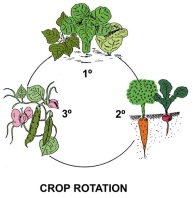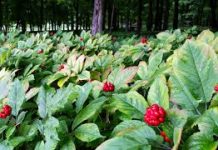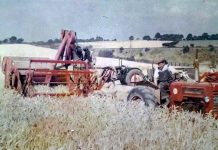 Crop rotation has been used since Roman times to improve plant nutrition and to control the spread of disease. A new study to be published in Nature’s ‘The ISME Journal’ reveals the profound effect it has on enriching soil with bacteria, fungi and protozoa. “Changing the crop species massively changes the content of microbes in the soil, which in turn helps the plant to acquire nutrients, regulate growth and protect itself against pests and diseases, boosting yield,” said Professor Philip Poole from the John Innes Centre. Soil was collected from a field near Norwich and planted with wheat, oats and peas.
Crop rotation has been used since Roman times to improve plant nutrition and to control the spread of disease. A new study to be published in Nature’s ‘The ISME Journal’ reveals the profound effect it has on enriching soil with bacteria, fungi and protozoa. “Changing the crop species massively changes the content of microbes in the soil, which in turn helps the plant to acquire nutrients, regulate growth and protect itself against pests and diseases, boosting yield,” said Professor Philip Poole from the John Innes Centre. Soil was collected from a field near Norwich and planted with wheat, oats and peas.
After growing wheat, it remained largely unchanged and the microbes in it were mostly bacteria. However, growing oat and pea in the same sample caused a huge shift towards protozoa and nematode worms. Soil grown with peas was highly enriched for fungi. “The soil around the roots was similar before and after growing wheat, but peas and oats re-set of the diversity of microbes,” said Professor Poole. All organisms on our planet can be divided between prokaryotes (which include bacteria) and eukaryotes (which include humans, plants and animals as well as fungi). After only four weeks of growth, the soil surrounding wheat contained about 3% eukaryotes. This went up to 12-15% for oat and pea. The change of balance is likely to be even more marked in the field where crops are grown for months rather than weeks. Analysis has previously relied on amplifying DNA samples.
This limits scientists to analysing one taxonomic group at a time such as bacteria. It also means that everything present in that group is analysed rather than what is playing an active role. Every gram of soil contains over 50,000 species of bacteria so the task is enormous. There are relatively fewer actively expressed genes, or RNA. It is now possible to sequence RNA across kingdoms so a full snapshot can be taken of the active bacteria, fungi, protozoa and other microbes in the soil. The research was carried out in collaboration with the University of East Anglia and The Genome Analysis Centre on Norwich Research Park. “By sequencing RNA, we can look at the big picture of active microbes in the soil,” said PhD student Tom Turner from the John Innes Centre. “This also allows us to work out what they are doing there, including how they might be helping the plants out.” “Our work helps explain the experience of farmers in the field,” said Professor Poole. “The best seed needs to be combined with the best agronomic practices to get the full potential benefits.” “While continued planting of one species in monoculture pulls the soil in one direction, rotating to a different one benefits soil health.” Seeds can be inoculated with bacteria before planting out, just like humans taking a dose of friendly bacteria. But this does not achieve the diversity or quantity of microbes found in this study.
The scientists also grew an oat variety unable to produce normal levels of avenacin, a compound that protects roots from fungal pathogens. They expected the soil to contain higher levels of fungi as a result, but instead found it contained a greater diversity of other eukaryotes such as protozoa. The findings of the study could be used to develop plant varieties that encourage beneficial microbes in the soil. John Innes Centre scientists are already investigating the possibility of engineering cereal crops able to associate with the nitrogen-fixing bacteria normally associated with peas. “Small changes in plant genotype can have complex and unexpected effects on soil microbes surrounding the roots,” said Professor Poole. “Scientists, breeders and farmers can make the most of these effects not only with what they grow but how they grow it.” The research was made possible with funding from the Earth and Life Systems Alliance at the University of East Anglia and from the core strategic grant to the John Innes Centre from the Biotechnology and Biological Sciences Research Council (BBSRC).





